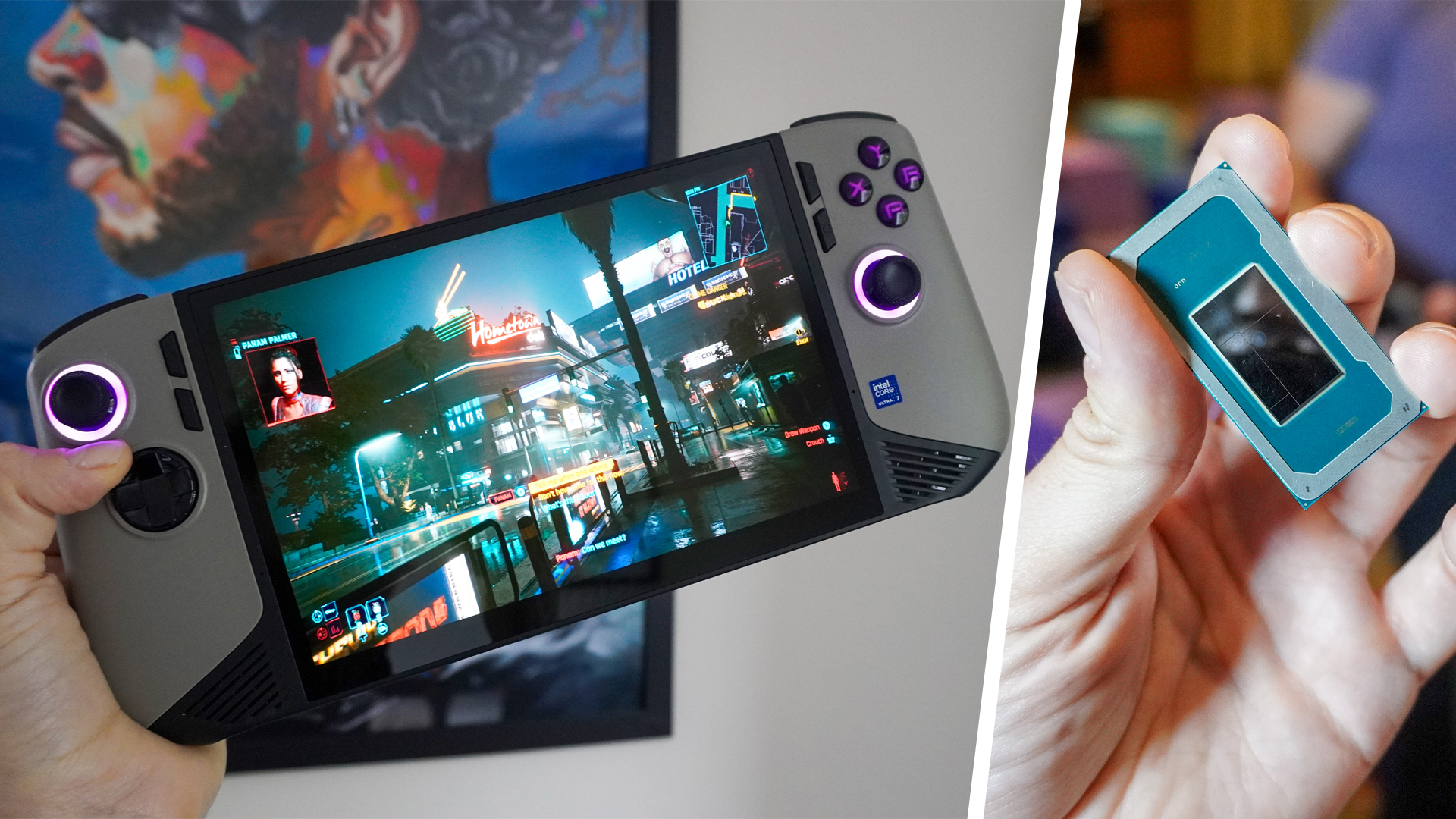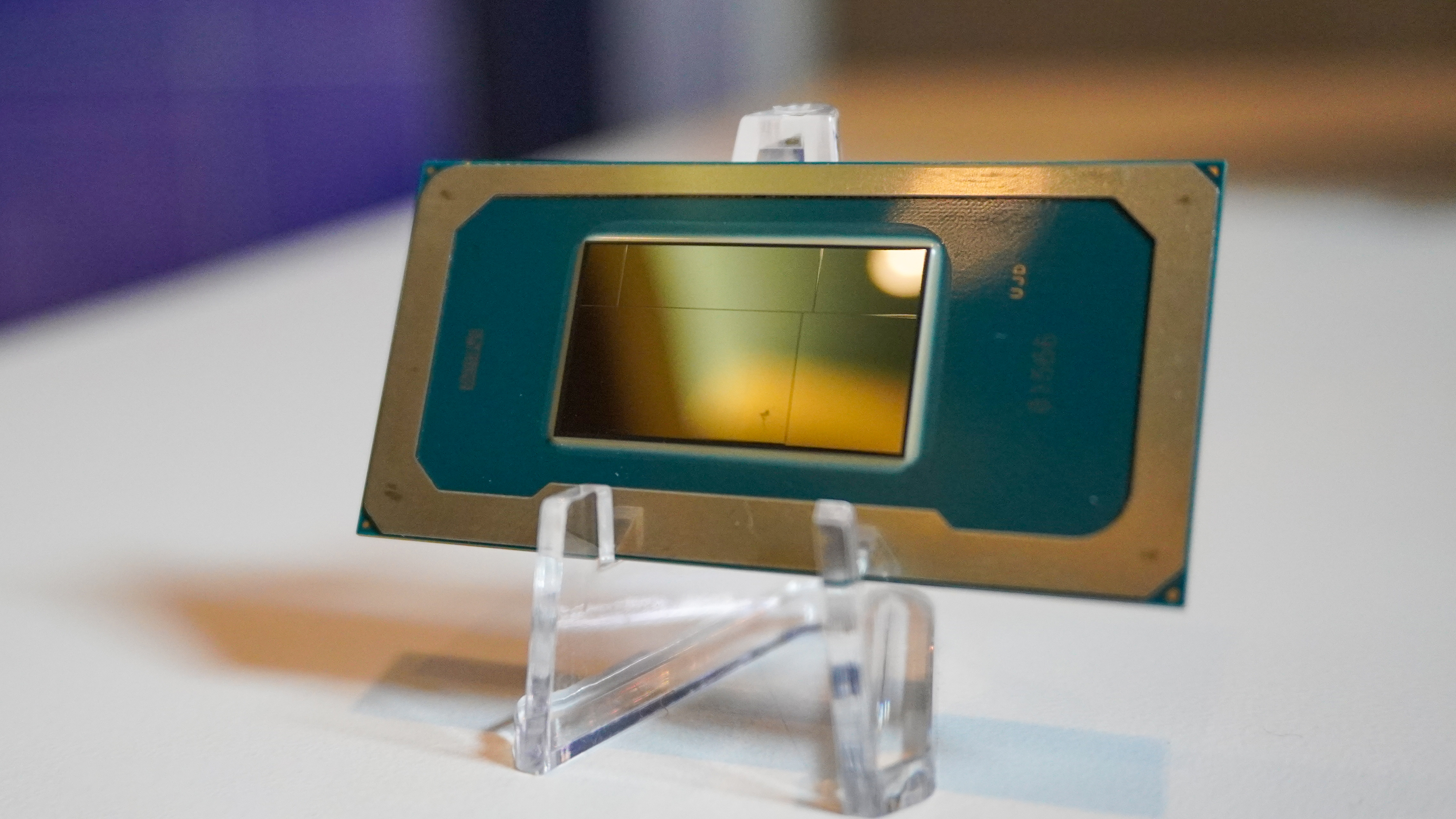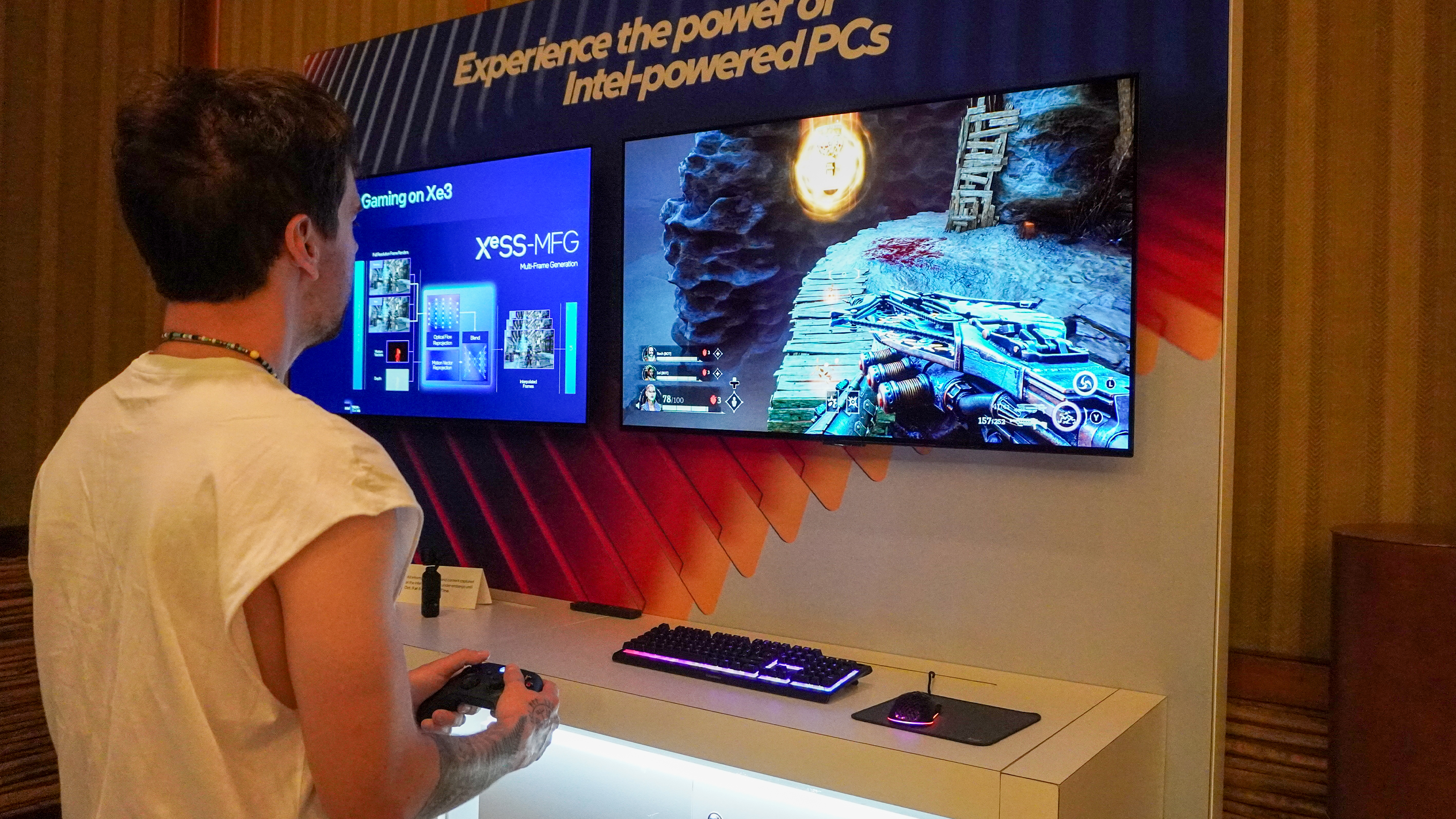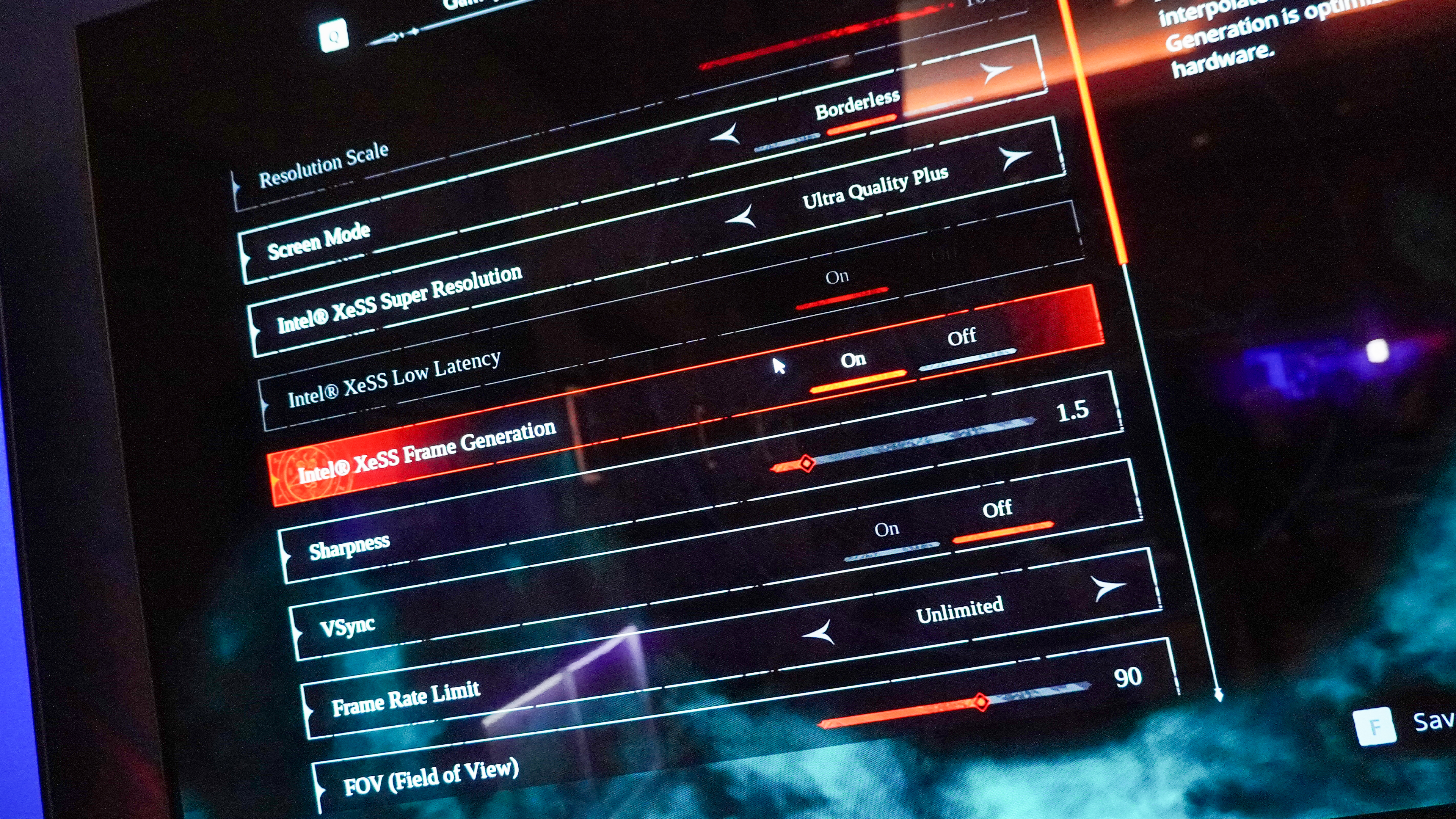Intel Panther Lake could power the future of handheld gaming — here's why AMD should be nervous
A killer combo of performance and power efficiency

So, as you may already know, Intel Panther Lake is officially on the way, and I got to test it for myself. While there’s a lot to get excited about — bringing the efficiency of Lunar Lake and mashing it with the raw performance of Arrow Lake — the one standout feature to a gamer like me is that GPU.
With up to 12 Xe3 cores, better ray tracing capabilities, and some crazy good new AI-driven gaming features that provide improved frame rates, I was blown away by what this chip is capable of.
That’s all well and good for a laptop, but at a time when the AMD Ryzen Z2 Extreme has only seen minor uplifts in performance over Z1 (read my MSI Claw A8 review for specific numbers on that), Panther Lake could be the true generational leap I’ve been looking for. Let me explain why AMD should be nervous right now.
Seriously strong performance

At the moment, one Intel gaming handheld exists with worldwide availability — the MSI Claw 8 AI+. While AMD continues to take a lead over this chipset for handheld gaming, recent updates have made the Core Ultra 7 258V an impressive alternative.
That being said, its graphics prowess could be better. This is Lunar Lake after all: the notebook chipsets that were really good with power efficiency, but not so great on the performance side of things. And this is where Panther Lake comes into the equation, by taking the speed focus of Arrow Lake and pairing it with this stamina.
So far, we know of two GPU options — a base model Panther Lake chip with a 4-core Xe3 GPU, and a top-of-the-line option with 12 cores. Surprisingly, though, while I assumed Intel would tell me that gaming handhelds would go for the lower configuration, the company is so confident in its power management that the 12-core monster could fit in here.
By the numbers
We can put this to the test…sort of. You see, the demo units at the Intel Tech Tour were laptops running with 45 watts of power. In a gaming handheld, that would be insane, as to get decent stamina, you’d be looking at 17 watts. However, let’s go into this with Painkiller, which runs at a rock solid 60 FPS at 1080p Epic settings with Intel’s own XeSS resolution scaling tech.
Get instant access to breaking news, the hottest reviews, great deals and helpful tips.
First off, it’s worth noting that in a chip that you’re probably going to find in slimline notebooks, that’s crazy good. Integrated graphics have been coming along in leaps and bounds recently, and Intel’s taking a giant jump ahead with 1.5x graphics improvement over Lunar Lake (as claimed by the company).

Oh, and let’s not forget those 12 ray tracing units running alongside the GPU cores — really unlocking those more realistic, immersive lighting and reflections. It’s seriously impressive to see in person.
Now let’s apply the logic that we see from AMD gaming handhelds — namely that the difference between its highest wattage and 17 watts is around a 30-40% drop in frames (provided you aren’t optimizing the settings).
Of course, that drop could be bigger for Intel, going from the 45W I saw to 17W. But that performance curve for the 12-core Panther Lake really may not be as stark when turning down the power, as more cores means less work across them all. Using very rough math to paint a picture, I’d say this could be 30-35 FPS.
Intel did say this GPU has been tested across a range of wattages, and even confirmed that at 28W, they were seeing “similar results” to 45W. This could seriously be a breakthrough for handheld gaming, but I haven’t even gotten to the best bit yet.
Multi frame gen makes sense here

Built on Xe3 cores, Intel has been able to do some AI wizardry and bring XeSS multi-frame generation to the party. Essentially, for every two frames the GPU generates, AI fills in three in between for far smoother frame rates.
Intel has been able to do some AI wizardry and bring XeSS multi-frame generation to the party. Essentially, for every two frames the GPU generates, AI fills in three in between for far smoother frame rates.
Going back to Painkiller, turning this on shoots it up to an average of 220 FPS with no perceptible latency! Of course, a fast base frame rate is critical to that lower latency, but to see MFG come to integrated graphics is, frankly, a little mind blowing.
I can understand why owners of an expensive GPU like the RTX 5090 might not be the happiest about multi-frame gen. You’re spending two racks on it, so to be given AI trickery for those frame rate boosts may feel like a compromise to the raw rasterization improvements.
But to see this tech come to powerful integrated graphics is huge. And to potentially see this in the world of handheld gaming would be a game-changer.
Follow Tom's Guide on Google News and add us as a preferred source to get our up-to-date news, analysis, and reviews in your feeds. Make sure to click the Follow button!
More from Tom's Guide
- Lenovo Legion Go 2 review — A great handheld hampered by its steep price
- I'm sorry but the ROG Xbox Ally is way too expensive — and it makes the Steam Deck look like a bargain
- Netbooks are back, baby! And that’s not even the weirdest part of this gaming handheld hybrid

Jason brings a decade of tech and gaming journalism experience to his role as a Managing Editor of Computing at Tom's Guide. He has previously written for Laptop Mag, Tom's Hardware, Kotaku, Stuff and BBC Science Focus. In his spare time, you'll find Jason looking for good dogs to pet or thinking about eating pizza if he isn't already.
You must confirm your public display name before commenting
Please logout and then login again, you will then be prompted to enter your display name.
